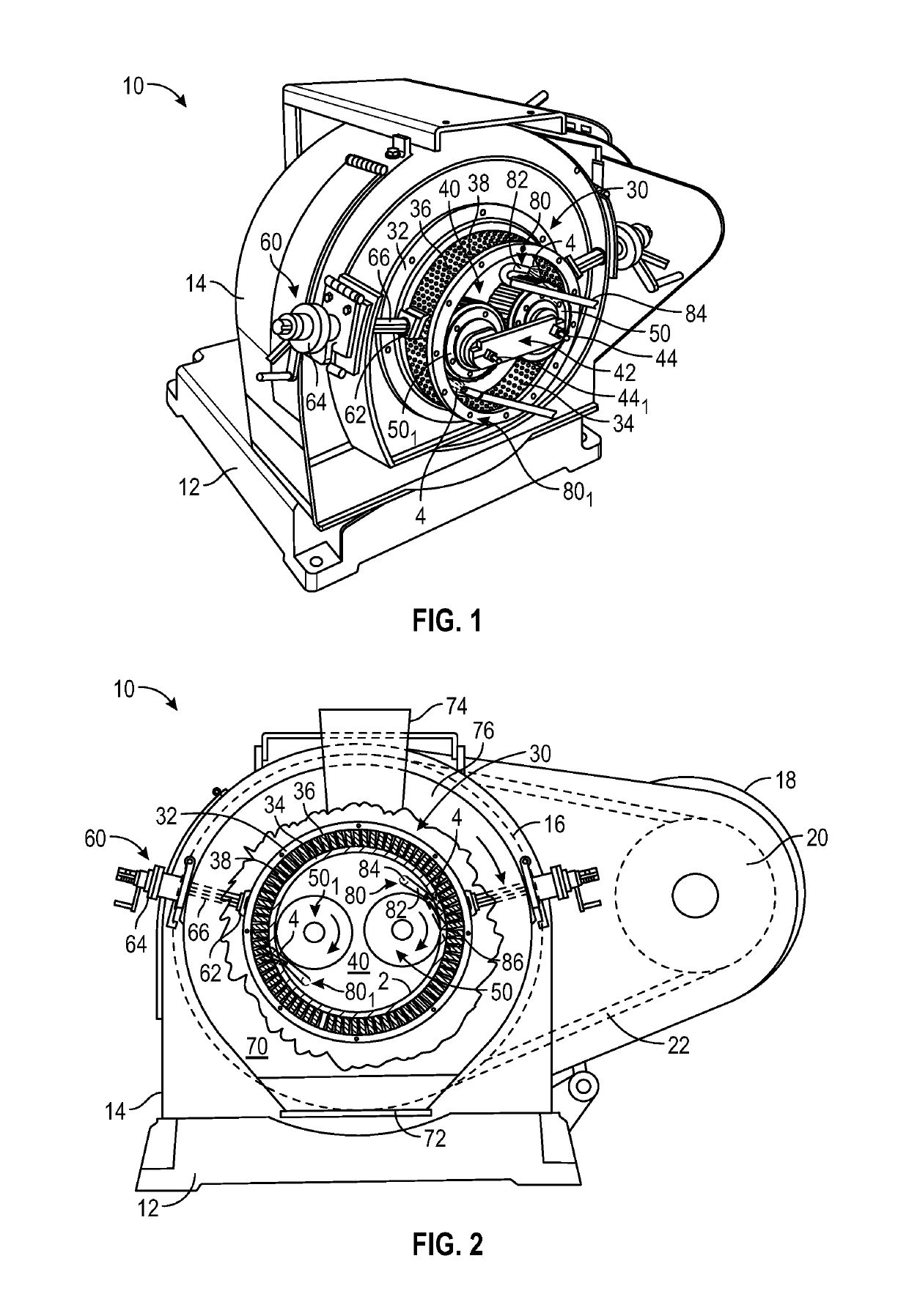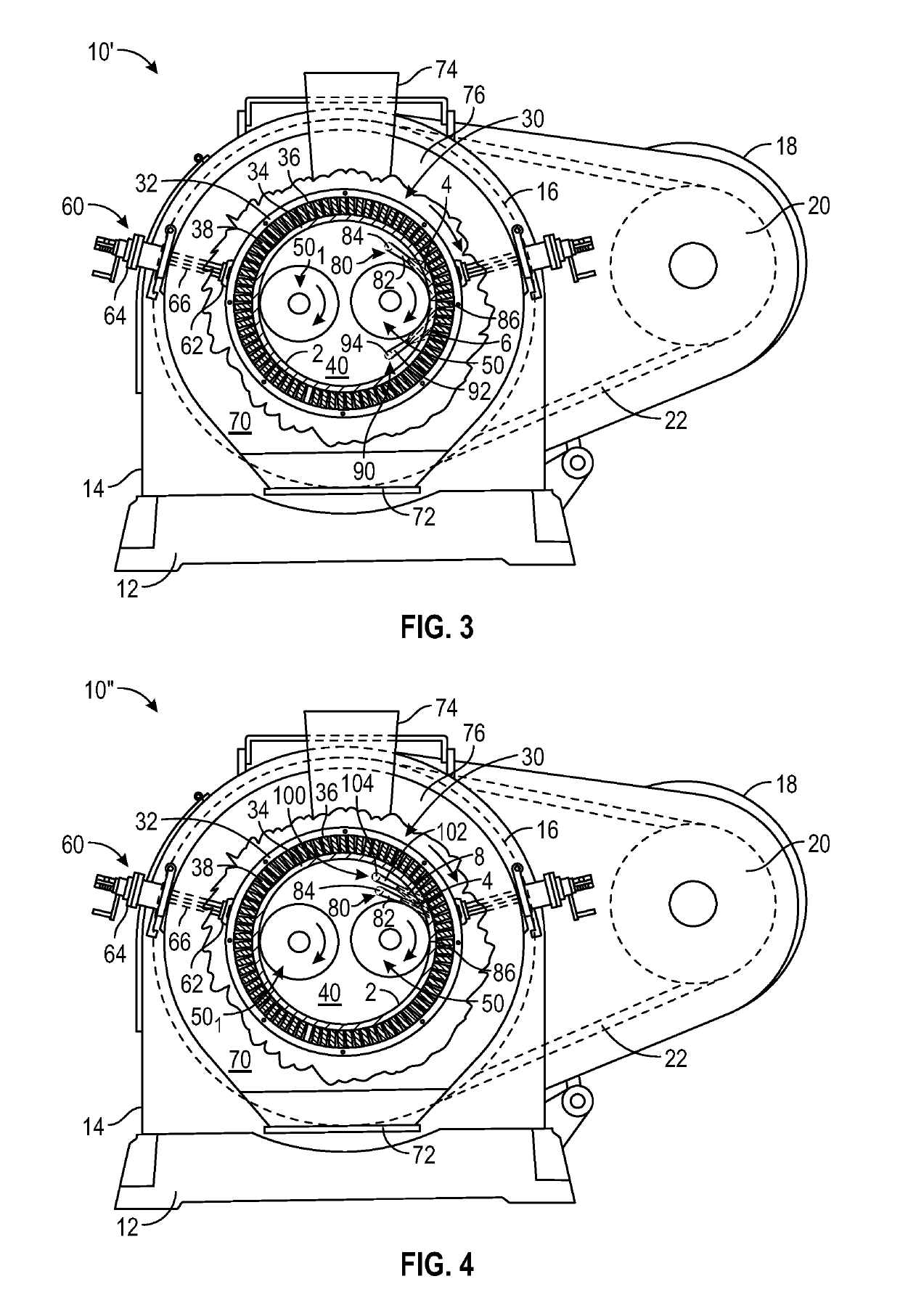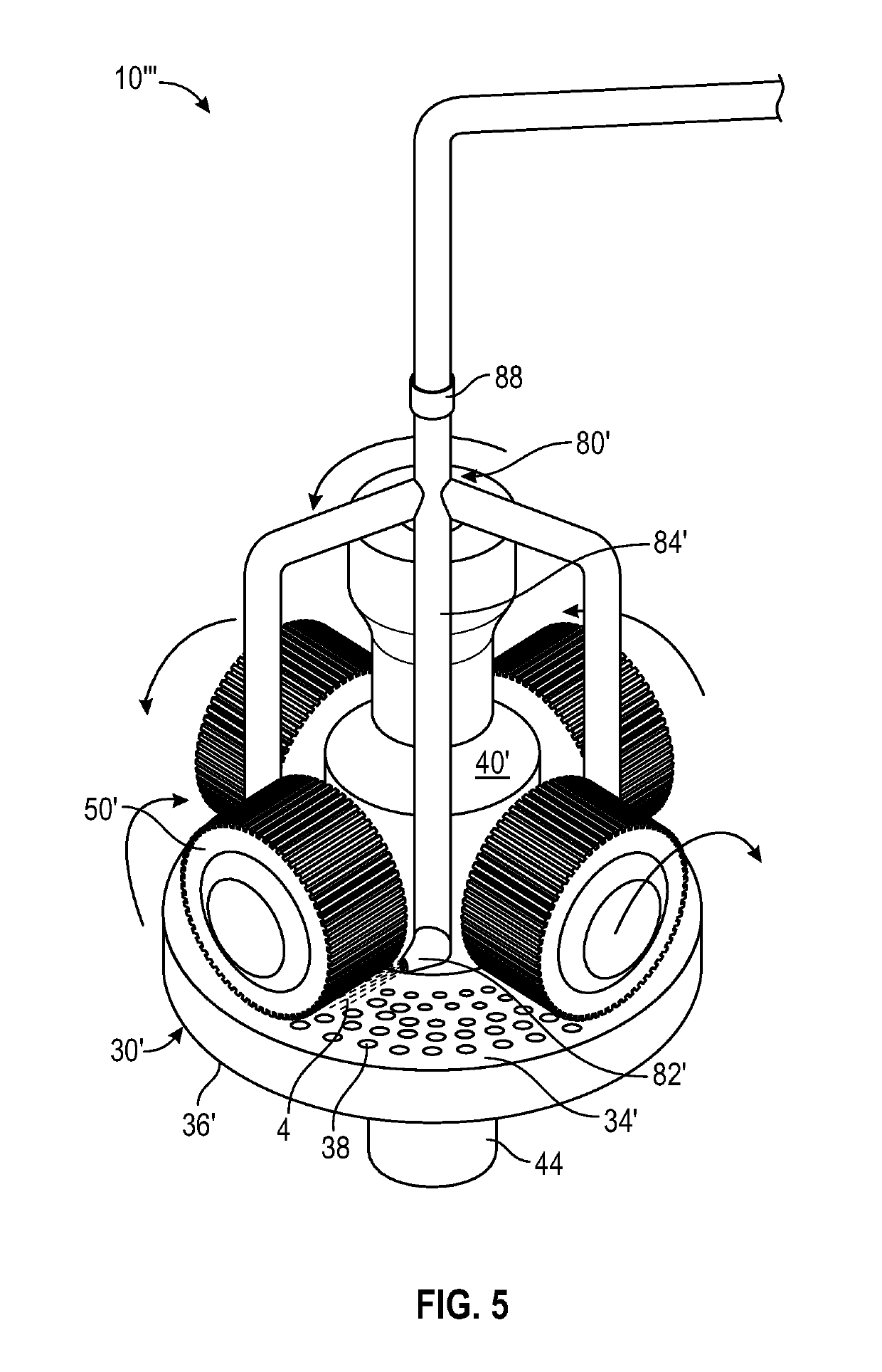Pellet mill with addition of fluid
a technology of pellet mills and fluids, applied in the field of pellet mills, can solve the problems of difficult material transportation into the pellet mill, or even the handling of the material during preconditioning, and achieve the effects of easy handling, easy handling, and easy handling
- Summary
- Abstract
- Description
- Claims
- Application Information
AI Technical Summary
Benefits of technology
Problems solved by technology
Method used
Image
Examples
example
Pelletizing with Pilot Scale Rotating Die
Materials and Methods
[0088]Willow was pretreated by being chipped and dried in a flatbed dryer at around 40° C. to moisture contents around 4-8% at the Biofuel Technology Centre, Swedish University of Agricultural Sciences (SLU), Umeå, Sweden. The dried and chipped willow was then torrefied by in a second generation pilot scale plant (200 kg h−1) in a continuous process in which the material to be torrefied was preheated in a rotary drum (220° C.) before being treated in a heated auger screw where torrefaction takes place at a temperature of 308° C. and a residence time of 9 minutes in an inert atmosphere obtained by N2 as a purge gas. The resulting mass yield was 83%.
[0089]The torrefied willow was then hammer milled with a screen size of 6 mm (Vertica Hammer Mill DFZK-1, Bühler AG, Uzwil, Switzerland). Moisture content was adjusted to about 9% w.b. in a blender by adding water during mixing. Prepared materials were left in silos for 16 hours...
PUM
| Property | Measurement | Unit |
|---|---|---|
| die temperatures | aaaaa | aaaaa |
| temperature | aaaaa | aaaaa |
| screen size | aaaaa | aaaaa |
Abstract
Description
Claims
Application Information
 Login to View More
Login to View More - R&D
- Intellectual Property
- Life Sciences
- Materials
- Tech Scout
- Unparalleled Data Quality
- Higher Quality Content
- 60% Fewer Hallucinations
Browse by: Latest US Patents, China's latest patents, Technical Efficacy Thesaurus, Application Domain, Technology Topic, Popular Technical Reports.
© 2025 PatSnap. All rights reserved.Legal|Privacy policy|Modern Slavery Act Transparency Statement|Sitemap|About US| Contact US: help@patsnap.com



